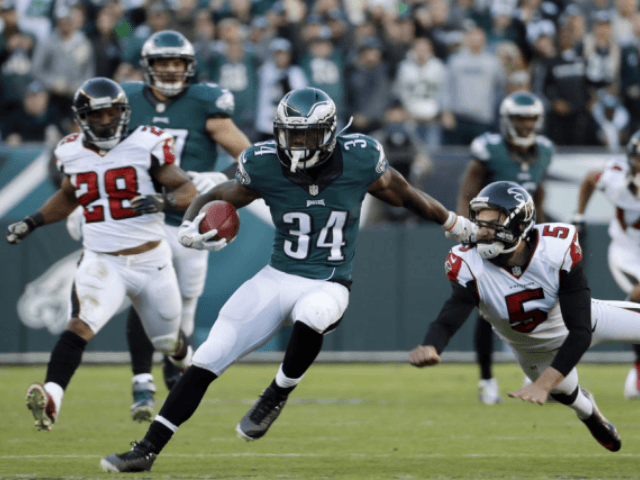New York (AFP) – NFL coaches, referees and officials began two days of meetings Tuesday on safety-related rules, vowing not to eliminate kickoffs but examine ways to make the most dangerous play much safer.
Troy Vincent, NFL executive vice president of football operations, said changes in recent years, such as moving the kick line to produce more touchbacks, have helped.
But Vincent worries about the number of hard hits produced even on touchbacks from players making high-speed contact with one another as they block for kick returners or try to make tackles.
“We’ve got to get that out of the game,” Vincent said.
The meetings, which will include former NFL players, are the latest to address the issue of kickoffs and touchbacks, where the ball is downed in the end zone or kicked beyond it and teams begin scrimmage plays from their 25-yard line.
In 2011, the NFL advanced kickoff spots from a team’s 30-yard line to the 35 and also allowed coverage teams only a five-yard running start.
Two years ago, the NFL improved the field position teams received from a touchback from the 20 to the 25, providing greater motivation not to attempt a runback.
Since 2015, there has been a slight drop in the number of NFL kickoff returns, from 1,081 in a season to 1,036, or from just over one-third of the time per team to just under that level in 2017.
Green Bay Packers president Mark Murphy, a member of the NFL competition committee, said in March that rulemakers would eliminate kickoffs if no way was found to make them safer.
Vincent indicated that among the ideas would be allowing only one-on-one blocking on kickoffs, ending two-on-one situations that remain an issue.
The league wants to have a proposal for owners at their meeting later in May with an eye to making a change in time for the 2018 campaign.
This week’s two-day session will also explore a new rule banning players from lowering their heads to initiate contact with the helmet. The rule includes all areas of the helmet and to all areas of an opponent’s body not just his helmet.
Referees figure to have the trickiest time with the regulation since many of the situations will involve interior linemen blocking or trying to attack the quarterback.
Last season, the NFL said a record 291 concussions were suffered by players with 46 percent of those resulting from helmet-to-helmet contact.

COMMENTS
Please let us know if you're having issues with commenting.